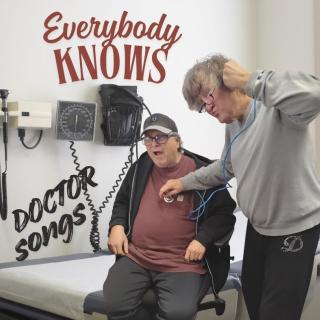Advertisement
The Felice Brothers aren't highfalutin'. The country boys from the Catskills would rather record an album in an unassuming farm garage shared by chickens than in a fancy studio in the big city. And that's just what they did with their new release, “Life in the Dark.” The result is a stark, unvarnished and down-to-earth record, as unpretentious yet thoroughly satisfying as a heaping plate of biscuits and gravy.
The band celebrates it's 10-year anniversary by hitting the road this month in support of “Life in the Dark,” and looks forward to returning to one of its favorite tour stops, the Rumba Cafe, on the15th. “We love coming to your town,” says James Felice, “we've played the Rumba four or five times.”
The Felice Brothers hail from rural upstate New York, and live there still. A decade ago, brothers James, Ian and Simone left the quiet surroundings of the Catskill Mountains for the hustle and bustle of the Big Apple, cutting their teeth busking in subway stations and eventually honing their act in the coffee shops of Greenwich Village, as did so many folkies before them. Drummer Simone left the band several years ago to get married and start a family, and now has his own band. The group's website describes them as “a close-knit band of two brothers and three longtime friends.” James (Accordion, organ, piano, vocals) and songwriter Ian (Guitar, piano, lead vocals) are joined by Josh “Christmas Clapton” Rawson (bass),drummer David Estabrook andfiddleplayer Greg Farley.
After making a name for themselves in the New York scene, high profile gigs at Bonaroo, the Newport Folk Festival and others followed, leading to critical acclaim, as well as the inevitable Bob Dylan comparisons. While flattering, the Dylan comparisons have grown somewhat tiresome over the years.“Like a lot of bands who play the certain type of music we play, we were inspired by Dylan,” James says. “I think it's a sort of lazy comparison...well, not lazy, but uninformed. He's the crowning achievement, the ultimate, most popular, most famous. It's fine, it's great to be compared to Dylan, but if you know anything about folk music, there's more apt comparisons to other artists.”
While the band's music has naturally been pigeonholed into the folk genre, James doesn't necessarily feel the label fits. “We were trying 'Garage Folk' for awhile,” he says. “It's inspired by folk music, in the songwriting, but not the edict of folk. We don't care for dressing up in vests and stuff like that...we love the music, but not the whole hayseed, variety-hour (aspect) of it.”
So folk music was more of just a starting point for the direction the band's music would take? “Absolutely,” James says, “that was definitely our original inspiration, and we still draw a lot of inspiration from the heroes of the folk movement, like Woody Guthrie. Our musical expression is more rooted in American Rock and Roll.”
The band's prolific output includes a slew of albums, although exactly how many is open to interpretation, since many of them are not considered official releases. “Life in the Dark” captures the essence of the band, their live performances. James says the live feel of the record is very much by design. “It was recorded very quickly, very rough and tumble...all live, completely live, just the way it had to be, the way we wanted it to be. I feel like if we'd had a million dollar studio it couldn't have come out any better than it did.” And while the songs are mostly lively and uptempo, the music belies the serious nature of the lyrics. The title track is based on Ian's interest in The Diary of Anne Frank. The cheery opening track “Aerosol Ball” tells of “The doll of St. Paul, at the aerosol ball. She's such a special girl, she's been around the world.” But a closer listen reveals her world to be a bleak one of poverty, drugs and toxic corporate consumerism.
Well her makeup and wigs
Are made of squealing pigs
And her hands and her arms are made by Pepperidge Farms
And her face and her neck are made by Sinopec
And the lines on her palms are made by Viacom
And her dreams and her thoughts are made by Microsoft
“Jack at the Asylum” examines the plight of the destitute mentally ill, while “Sell the House” tells the somber tale of a divorced family man struggling with the loss of his family and home – a song inspired by Ian's wife, a social worker who, James says, “has seen it all.” The result is a collection of songs that exude a bright and cheery joyfulness musically while lyrically relating the anguish of those who live on the margins of society...in the dark. “That's definitely intentional,” says James, “as a band, we have a joyful energy, happy to see people move, happy to see people dance, clap, whatever. But the subject matter is kind of dark and murky, but there's also a lot of hope...it's just a reflection of life and how we live it. A lot of times, you go through hard times with a smile.”
In January the band returns to Europe, where they have enjoyed several well-received tours. Felice says the fans in Europe can relate to American folk music because the themes are ones they are familiar with. “They seem to really dig it. Life in Germany, in Ireland and England are similar to life in America in so many ways. I don't think it's a novelty to them. They can relate. That's the amazing, amazing thing about music, especially something as provincial as folk music, that it can reach out across the world and grab people.”



